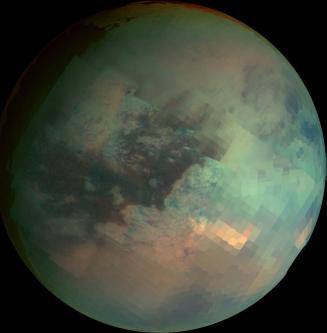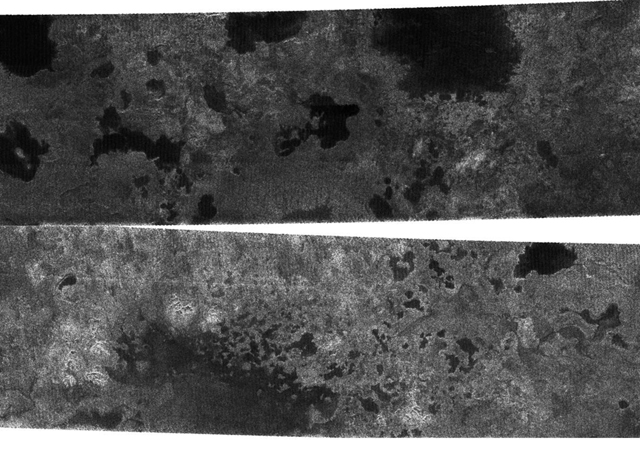|
It's the Astronomy Online non-Blog, or un-Blog.
Everyone has a blog now and since I am no follower of trends, I decided to merge the blog with the website. And I don't want to neglect the website in favor of posting on the blog.
These are the pages that were on the blog of old:
- Home
- Archive (Index of Pages)
- Me
- Current Trends
- Links
- Soho Live
Links:
Google Maps - Mars
Google Maps - Moon
HiRISE
HiRISE - MRO Imaging
Mac Singularity
Meade4M
Slackerpedia Galactica
Software for the Mac
Starry Night Online
Venus Maps
More Favorites:


































Thank you for visiting!
|
|
 |
|
Lakefront Property on Titan:
On July 2006, the Cassini orbiter made one of many flybys of Saturn's moon, Titan. Radar imagery of the northern regions of the moon revealed the darkest features discovered.

While the data from the Huygens probe has yet to be completed, initial interpretation suggests there are no active features contributing to methane replenishment; however, there is evidence that suggests a slight raining of methane - more like drizzle.

The lakes in the image above are pretty obvious, and look strangly enough like a black and white satellite image from Earth. The dark patches are the darkest objects seen on Titan so far, and there is a 90% possibility that these are liquid ethane and methane filled lakes.
Scientists have searched for these lakes for some time. There were some candidates discovered by radar imagery in the southern hemisphere, but these were not as dark and look more like rivers - similar to the landing site of the Huygens probe.
It is suggested that these lakes are the source of the methane smog in the atmosphere. Since it is thought there are no methods of methane replenishment, these lakes will evaporate completely at some point in the future.
The drizzle on Titan is constant, but not enough to form the features seen on the surface. Heat generated by the Sun at the southern hemisphere could generate periods of strong winds that result in the possibility of methane storms - the Earth analogue of monsoons.
Source: "Great Lake of Titan" by Selby Cull, Sky and Telescope July 28, 2006.
Next Post | Previous Post | Back to Top
|
|

